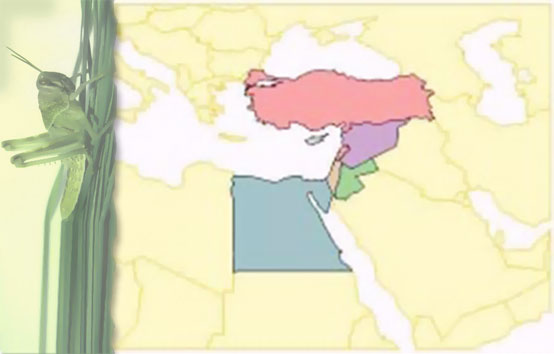Tarsonemidae
Taxonomic placing: Acari, Prostigmata, Heterostigmata.
Economic importance: Most species in this family feed on fungi and various organic debri and are harmless. A few, however, like the cyclamen mite, Phytonemus pallidus (Banks) (so far not known from the Middle East), and broad mite, Polyphagotarsonemus latus, are serious plant pests. A handful of species attack pests and may assist in their biological control.
Morphology: Small mites (ca 0.2-0.3 mm in length) with broad to elongate oval bodies covered by a hard and shiny integument. Tarsonemids bear a reduced setation; females have a pair of prodorsal sense organs (pseudostigmatic organs) that are lacking in males. Legs IV differ from other legs; in females they end with apical and subapical whip-like setae, whereas in males these legs usually terminate as a large claw. The family Tarsonemidae now contains about 900 species assigned to ca 45 genera.
Life cycle: Tarsonemidae undergo a foreshortened life cycle, with only two active stages, larvae and adults. The larvae have a brief feeding period and molt directly to adults. Generation time may be one week or less. Reproduction is by arrhenotoky and the sex ratio is variable. Tarsonemids show much diversity in feeding habits; some feed on green plants; many subsist on fungi, and still others are associated with arthropods, whether as parasites [e.g. tracheal mite, Acarapis woodi (Rennie)], parasitoids, predators, phoretics or in some yet undetermined relationship.
References
Lin, J.-Z. and Zhang, Z.-Q. 2002. Tarsonemidae of the World: Key to Genera, Geographical Distribution, Systematic Catalogue & Annotated Bibliograhy. Systematic & Applied Acarology Society, London, 440 pp.
Lindquist, E. E. (1986) The world genera of Tarsonemidae (Acari: Heterostigmata): a morphological, phylogenetic, and systematic revision, with a reclassification of family-group taxa in the Heterostigmata. Memoirs of the Entomological Society of Canada 136: 1-517.
Websites
